Drought tolerant plants in flower
This is just an excuse to show off. And I fear I have been boring you with my thrilling subjects of ‘shrubs’ this past week. Not much colour there.
So if you were to take a short walk from the shade garden, veering right round the potting shed you will meet the zing of delights on the terrace bank.
This is an experimental garden – no watering, not much soil, not much chance for wimpy plants.
Here is a shot of what it looked like before I decided to turn it into a sort of garden.
The only way I could come up with a garden structure was to get Nicolas (oh long suffering strong man) to cut down some chestnut trees from the forest and secure them, somehow, to the rock.
He bashed in little wooden pegs and we scraped soil. As you can see each bed has just a teensy bit of poor free draining soil to anchor the plants.
You wouldn’t wish this on any seedling. I tend to shove things here when I can’t quite work out where to put them elsewhere in the garden. And despite it being the closest area to water butts and watering cans, I don’t water the plants.
The whole bank (there are about ten narrow beds now) gets a thorough weed in spring – hence the photos I’m about to show you – and then I tend to avert my gaze.
And I forgot to mention that the beds on the left hand side are drought stricken in full sun. And the ones on the right are drought stricken in deep shade. There’s a chestnut tree looming overhead.
From my chaise longue in the potting shed this is now what I see.
Left side.
Right side.
I love how the virginia creeper which is supposed to be on the roof but is actually dangling down over the windows wants to get in the shot.
The brightest colour comes from a good reddish (well, crimson) variety of centranthus ruber (valerian). It’s a thuggish weed. But you can yank it out.
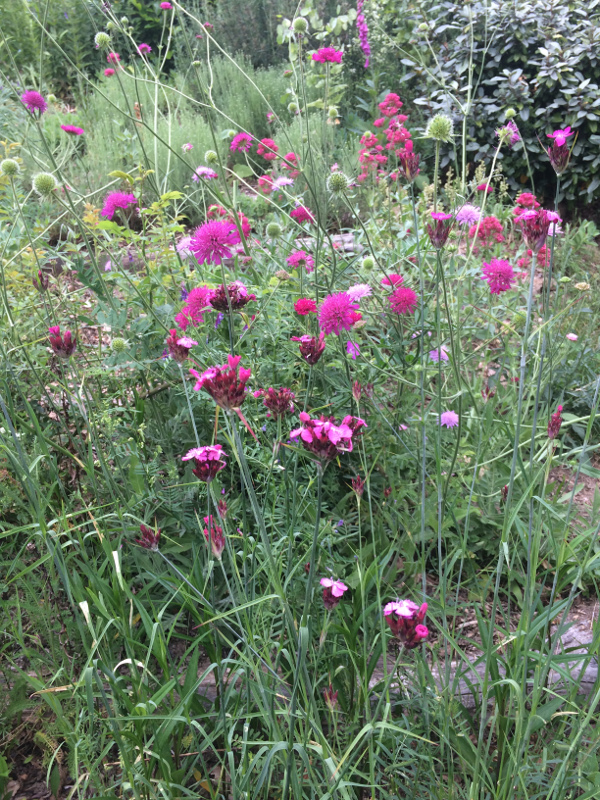 Tall airy gorgeous flowers in front are some sown from seed dianthus carthusianorum (Carthusian pink),
Tall airy gorgeous flowers in front are some sown from seed dianthus carthusianorum (Carthusian pink),
And the wonderful bee loving knautia macedonica. I’m dreadful with labels, so when it came time for me to recall what plant I had sown in this part of the garden I had to rely on my favourite encyclopedia of plants – Andrew.
I sent him this photo with a plaintive bleat. And about ten seconds later he replied with the answer. (Note the rare sighting of the lesser spotted pair of gloves. There are brambles all throughout these beds, plus the extra thrill of ant nests.)
Now I boast about not watering, but the knautia and the dianthus were sown from seed in March last year and I think I planted out the small seedlings around May. No fertilizer, no compost. They have to get used to their dreadful conditions…. but actually they are the conditions they probably encounter in the wild. But I did drench each plant every fortnight with a bucket of water.
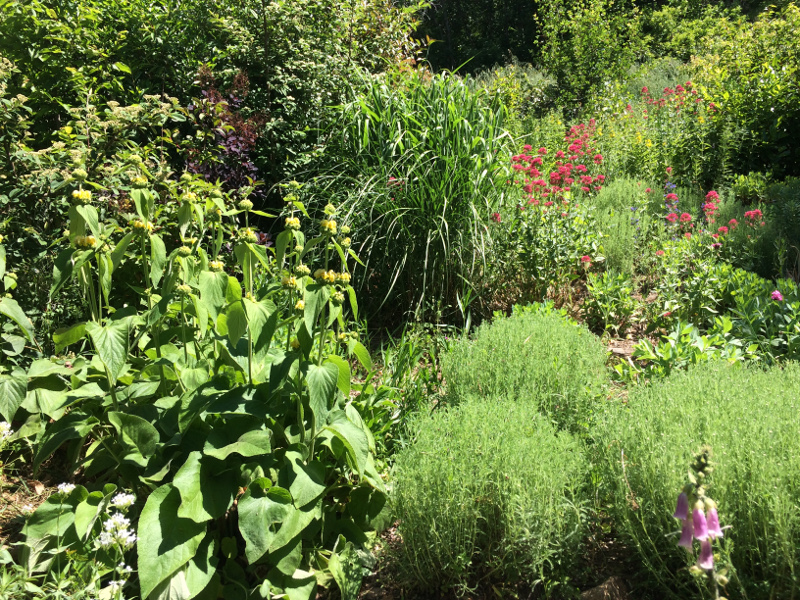
The phlomis (also sown from seed) are an experiment as I’m not sure they are fully hardy. I killed a lot in my first few years. But with the hedge just beside them I think they get some shelter from our minus 12C weather in winter.
I really, really prefer the phlomis purpurea but the yellow works as it’s such an upright statuesque plant. I love them when they have gone over and I can cut the dried seedheads. (I must remember to collect the seeds this year.)
And the santolinas are in their perfect dry environment here. I might even try leaving them be and see how they do in flower. In slightly richer soil in the barn garden and on a steep slope they flop alarmingly.
One thing I have learned about this gardening lark is that time is something you have to factor. This time last year the beds looked dull and weedy. The santolinas I took from cuttings and planted were just sulking and didn’t even look as through they would thrive at all. But given another season they are now taking off.
The sedums are perfect for this dry slope. I should get some good colour in autumn from the dozens of plants. Each year I take cuttings and each year I vow to do even more than the thirty or so plants I manage to create. I’ve already earmarked places in the garden where I can add more – and next week I’ll plant them out.
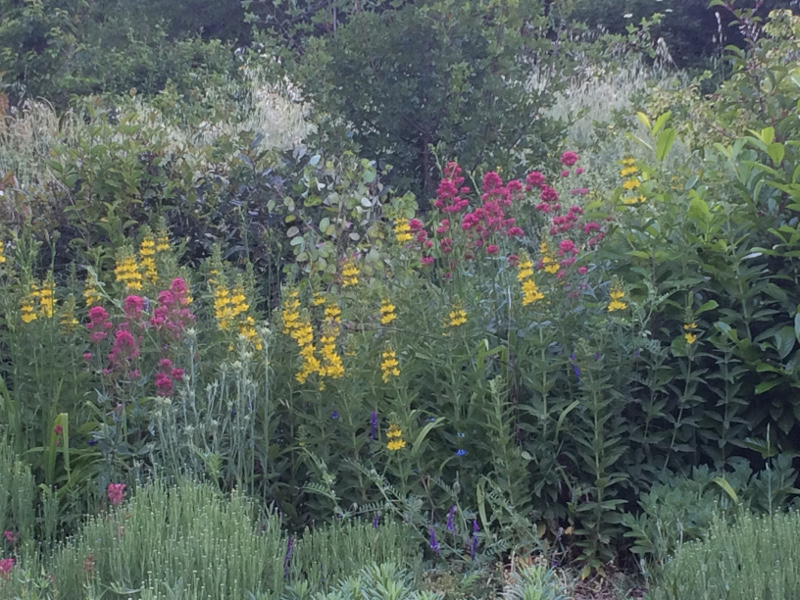
And what a treat to find the nigella still self seeding about. Dear little blue flowers.
Most things are strangled by this annual blue vetch which I love. It does drape rather fetchingly But I can only tolerate its strangling habit for the sake of the photo shoot, and then I realize that I have to free the roses from the weight of the plant.
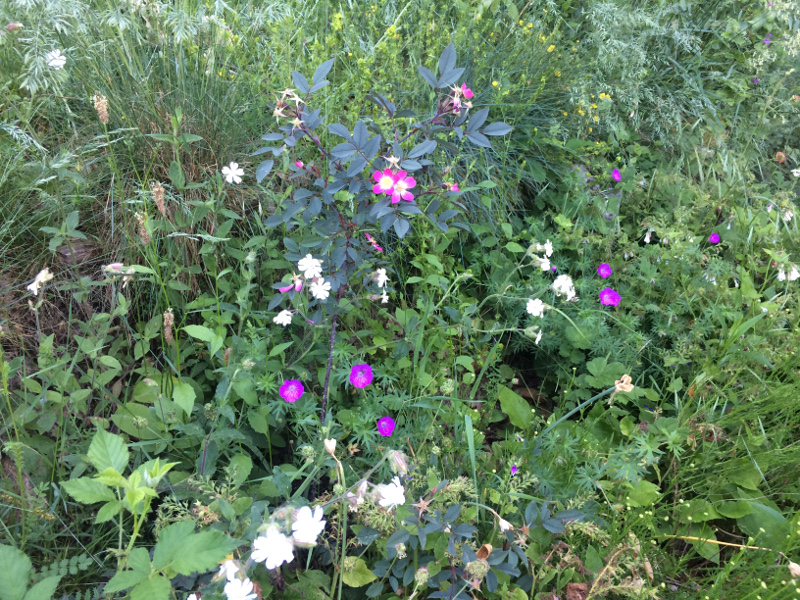
And a salutary reminder than you have to be patient; especially in a challenging garden that experiences extremes of temperature and drought.
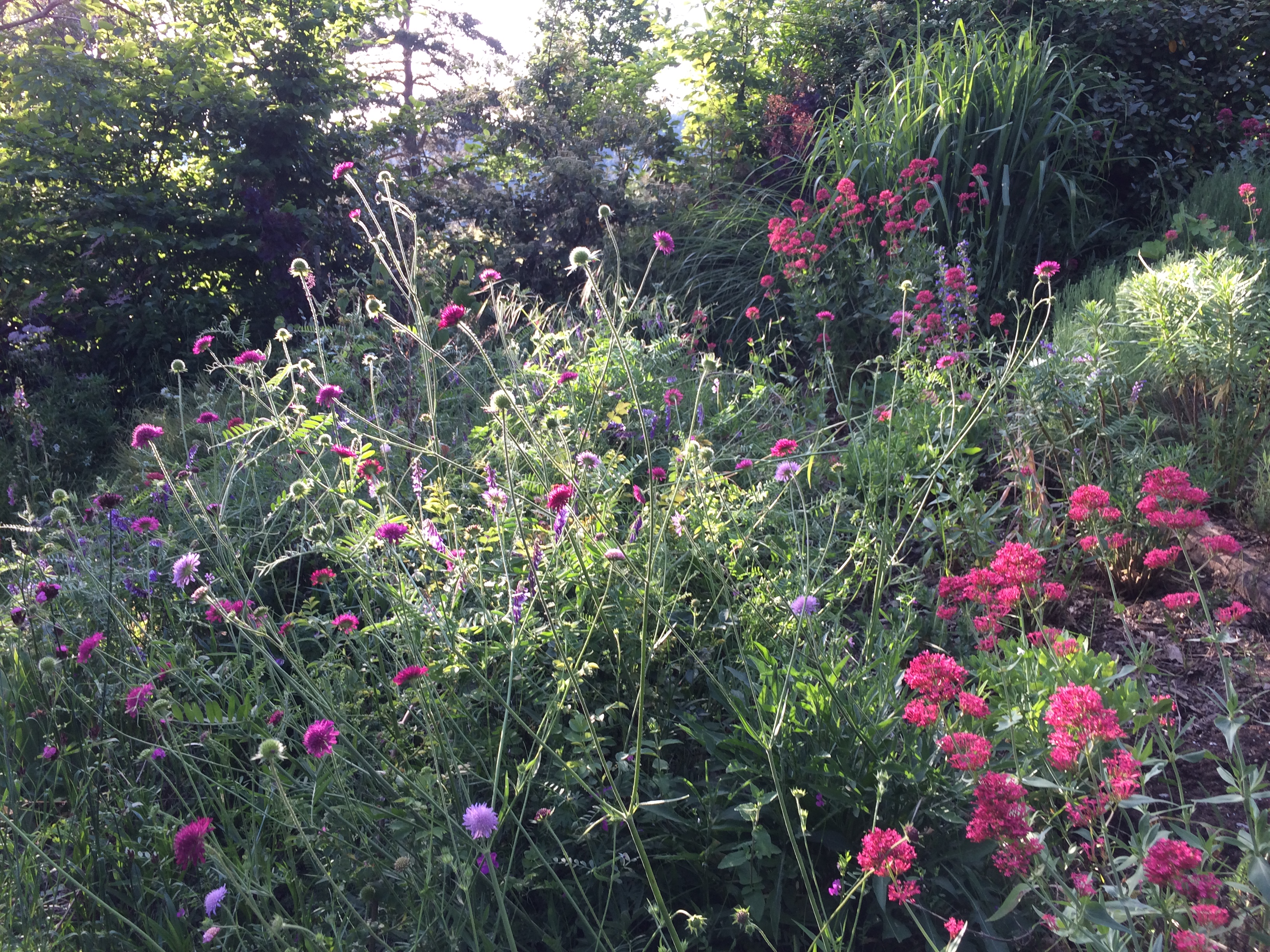
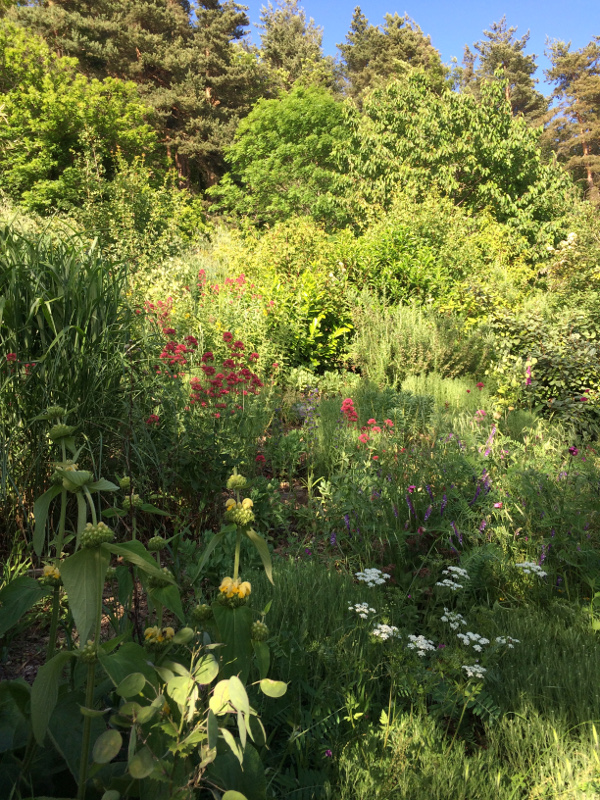
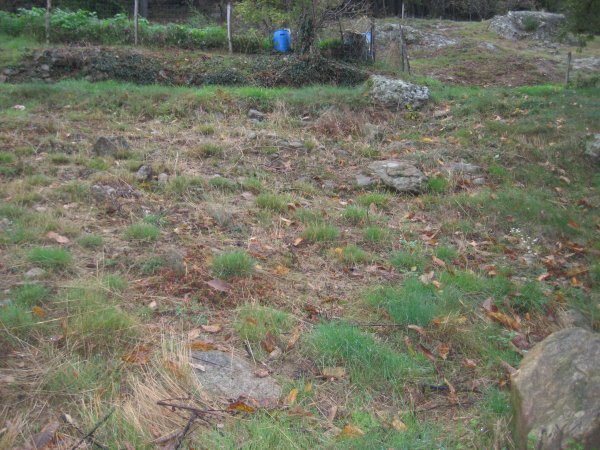
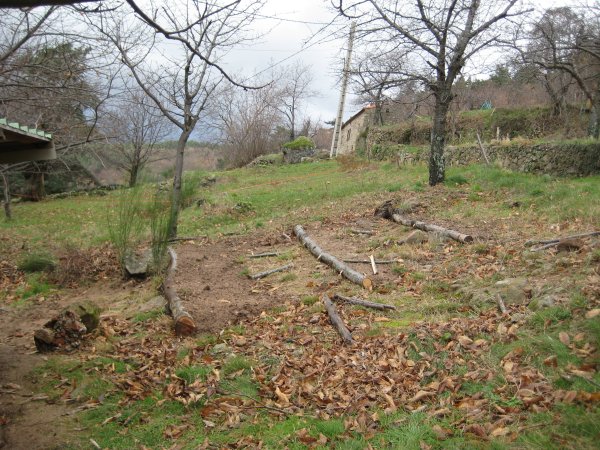
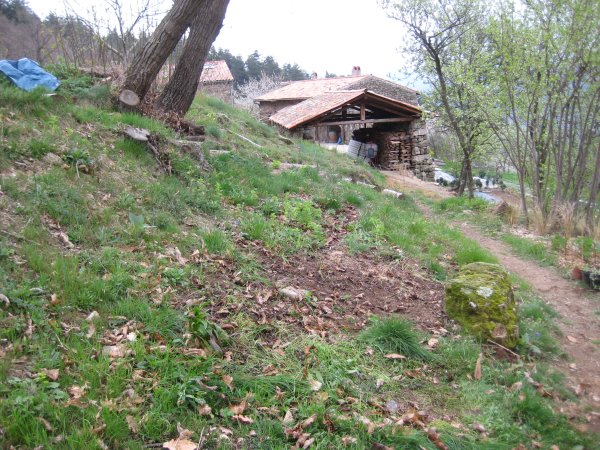
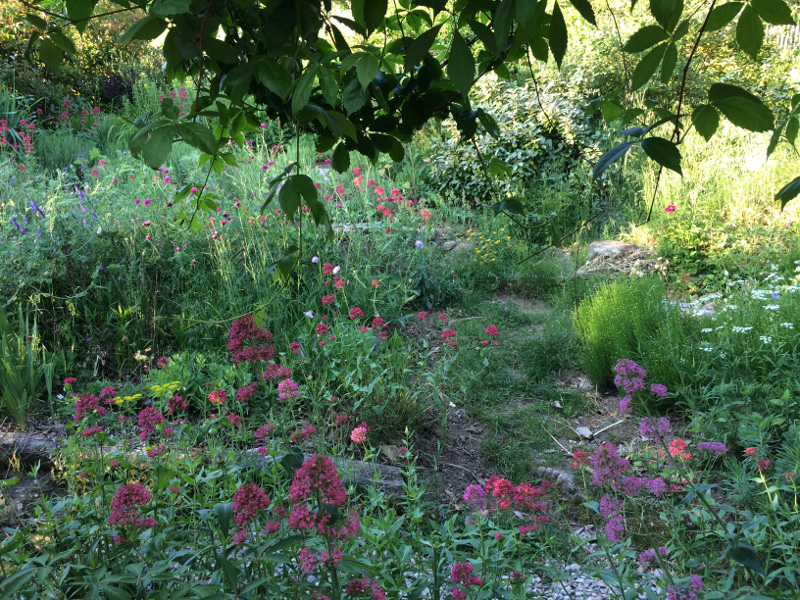
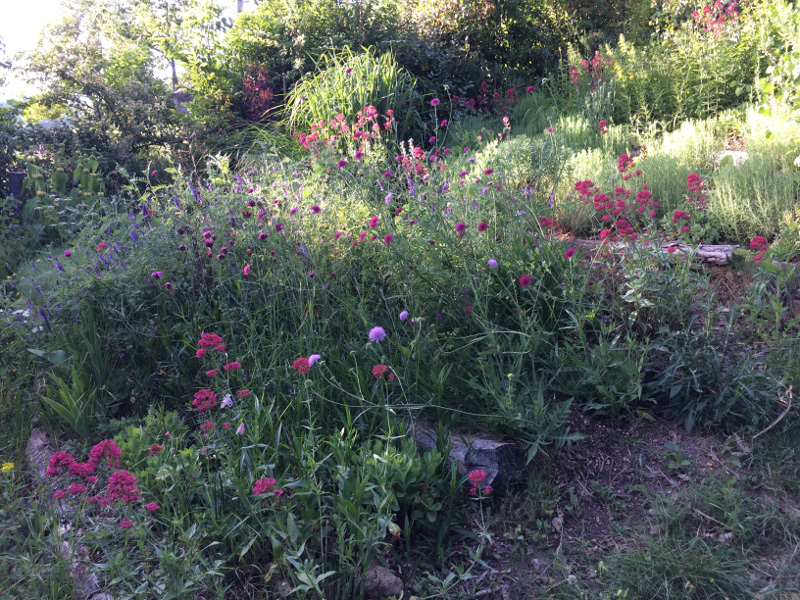
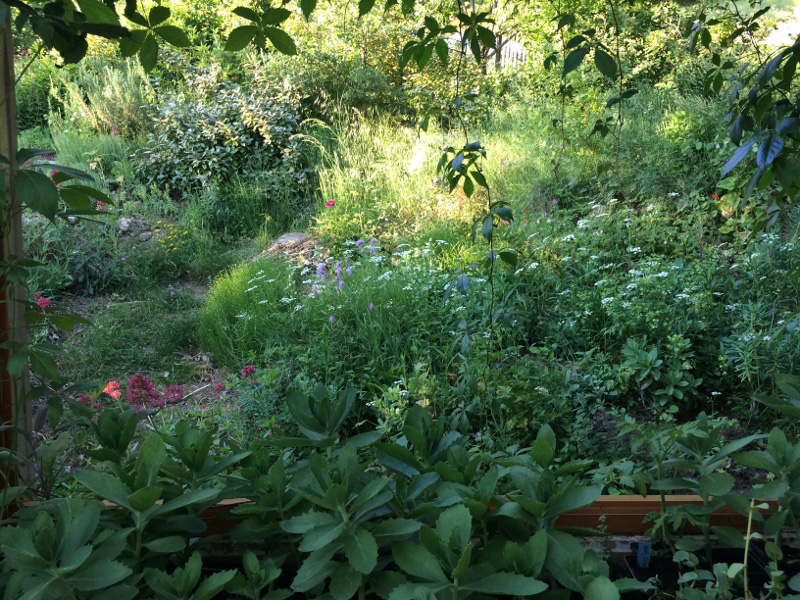
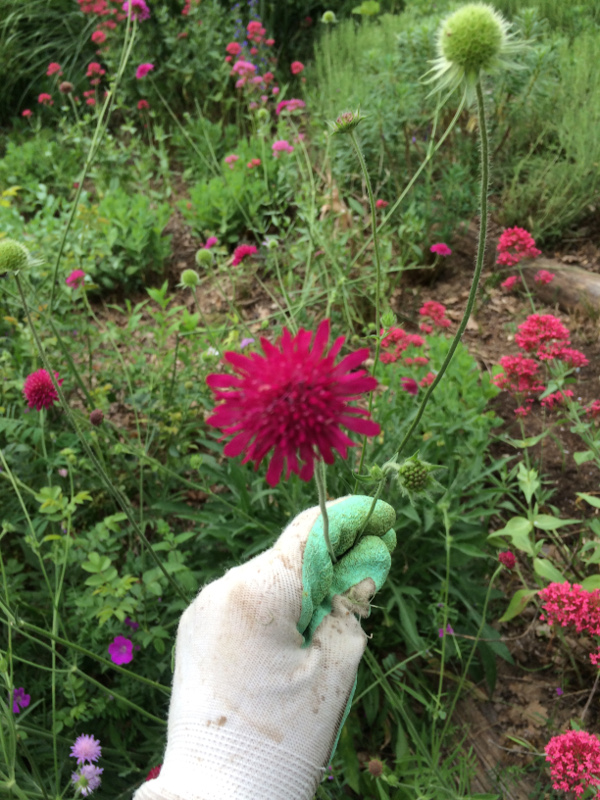
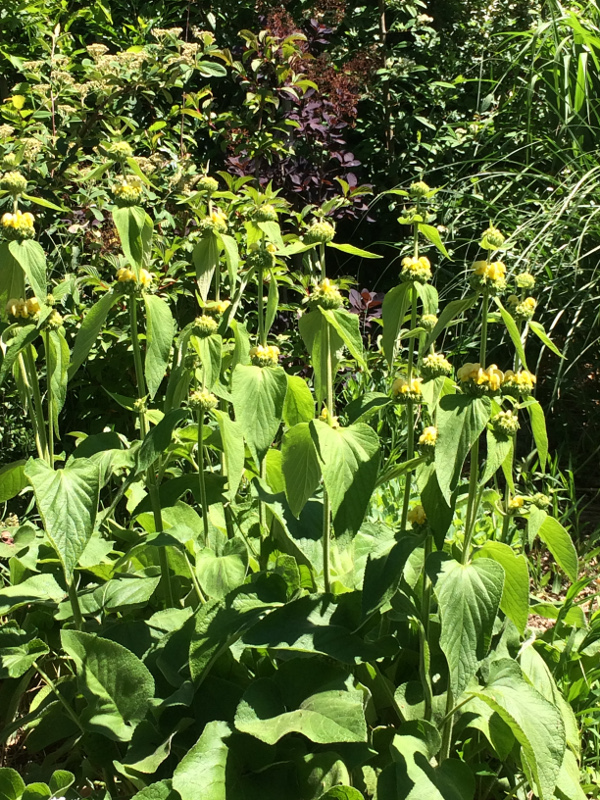
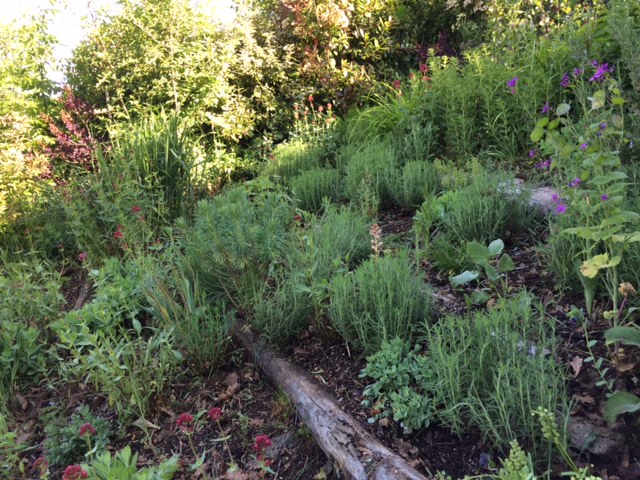



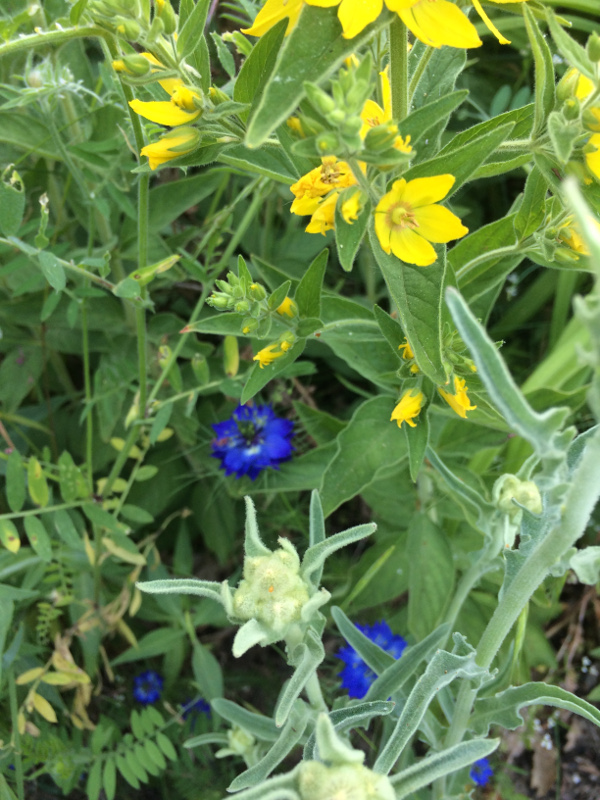
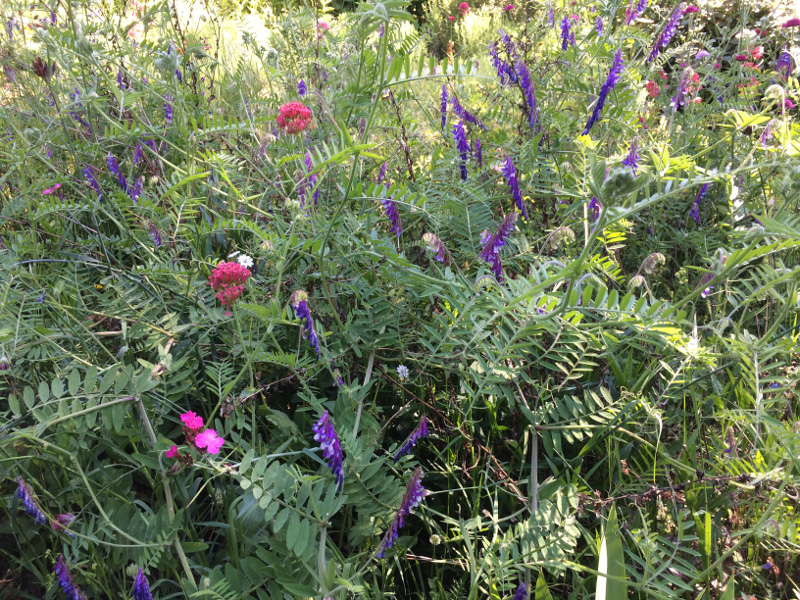
2nd June 2017 @ 8:52 am
Red Valerian grows like a weed here- every house in my village has it! I’m still battling with lysimachia- putting the chickens and ducks on it does seem to have halted it’s quest for world domination though.
I must take some cuttings from my sedums this year…
2nd June 2017 @ 9:06 am
Hi Hazel, do take your sedum cuttings they are just wonderful to propagate. But it’s always easier when they are small. the best results i have is to dig down a bit and pull out a single sedum with a sharp downward movement so you get a bit of root attached. (I dig around the plant a bit to expose it). Well done for getting your chooks and ducks to do the weeding for you!
7th June 2017 @ 6:51 am
Thanks, I’ll try that.